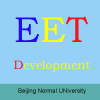-
Using multimedia technology to teach Mexican-Ameri
普通类 -
- 支持
- 批判
- 提问
- 解释
- 补充
- 删除
-
-
Multimedia for Hispanic Deaf
HISPANIC DEAF STUDENTS often have problems in school because of cultural and linguistic differences. Mexican-American deaf children are the fastest growing minority group in the US school age population of deaf children. There are more than 7,000 deaf children from Spanish speaking homes in the US (Schildroth & Hotto, 1996). These children have difficulty learning English and on standardize tests many score 2-3 years below their Caucasian peers who are deaf (Allen, 1994). Some Mexican-American deaf children use some spoken and written English, American Sign Language (ASL), gestures, and home signs. They may also speak and lip read Spanish. If families recently emigrated from Mexico or South America, these deaf children may use an indigenous sign language. This mixture of codes and languages can create difficulty learning subjects in English. Mexican-American deaf youth also navigate through three different cultures: Hispanic, American, and deaf culture. Some of these children celebrate religious and historical holidays with their families, but some of these cultural events have little meaning to them because few family members can explain the events in sign language. To meet their language and cultural needs, multimedia stories hav! e been centered on Mexican-American cultural themes for different reading levels with translations in ASL, written, and spoken texts in Spanish and English. Multimedia stories are accessible to children with a wide range of hearing losses (Pollard, 1993).
-
Multimedia technology let students explore information at their own pace
Deaf children who use ASL, printed texts can be supported with sign language video (or movie) dictionaries. These videos can include facial expressions, head tilts, eyebrow raises, and body movements by simply pressing a button and a person will appear on the screen, explaining the word in sign. This person could be the teacher (Pollard, 1993).
-
Hard-of-hearing children can choose these sign language translations or turn up the sound track
If the Hispanic child knows some Spanish words, he or she may click on a button to translate the paragraph into Spanish. They learn about their Mexican-American culture in stories that are motivating and entertaining to read (Andrews & Jordan, 1998).

-
Creating Mexican-American CD-ROM multimedia stories
Faculty and graduate students of Mexican-American heritage met to decide what cultural themes should be used. 150 books were purchased, including Hispanic history, literature, encyclopedias, and books on holidays, food, traditions, videotapes and magazines. Also, Internet resources were found on Hispanic and deaf cultures. Stories were made about animal, Mexican-American history, famous Hispanic Americans, holidays, crafts, foods, entertainment, and successful Hispanic deaf persons to provide role modeling to deaf children (Pollard, 1993).
The reading grade level was calculated using the Flesch-Kincaid readability formula on Microsoft Word 6.0. Computer graphics students designed pictures for the story and scanned pictures from books, calendars, and magazines. ! Other graduate students designed comprehension tests, or games for each story. The games provided the teachers with a tool to measure reading comprehension. For example, in one game, the student pressed a button to see a sentence signed into ASL. The student's task was to translate the ASL sentence into English.-
Communicating Results
Teachers reported that their students enjoy using the sign language videos with the English print. This has increased vocabulary learning. One teacher reported that one of her students used the vocabulary hot words independently by pushing the ASL transla! tion button to get the meaning in sign. Another teacher reported that the stories with Mexican-American themes have generated class discussions about identity and customs (piñatas, 15th birthday party, immigrants, and language). One teacher reported that her deaf students were learning Spanish words and bringing them home, to show to their parents. Many of these Mexican-American deaf children came from homes where either English or signing was used. CD-ROM stories raised the children's awareness of their home family's native language.(Andrews & Jordan, 1998).

-
Conclusion
Setting up a multimedia lab, developing stories training teachers, and assessing the progress of deaf children as they use CD-ROM stories! , is an attempt to make a positive impact in improving literacy for deaf children from the Mexican-American heritage. With computer costs decreasing and with improvements in technology, multimedia on CD-ROM's will continue to be excellent tools to bring deaf Mexican-American children into the 21st century.
-
Author
Monica Hernandez Educator
San Diego State University -
-
- 标签:
- using
- stories
- teach
- deaf
- sign
- students
- language
- technology
- multimedia
- children
- hispanic
- asl
- mexican-american
-
加入的知识群:



学习元评论 (0条)
聪明如你,不妨在这 发表你的看法与心得 ~